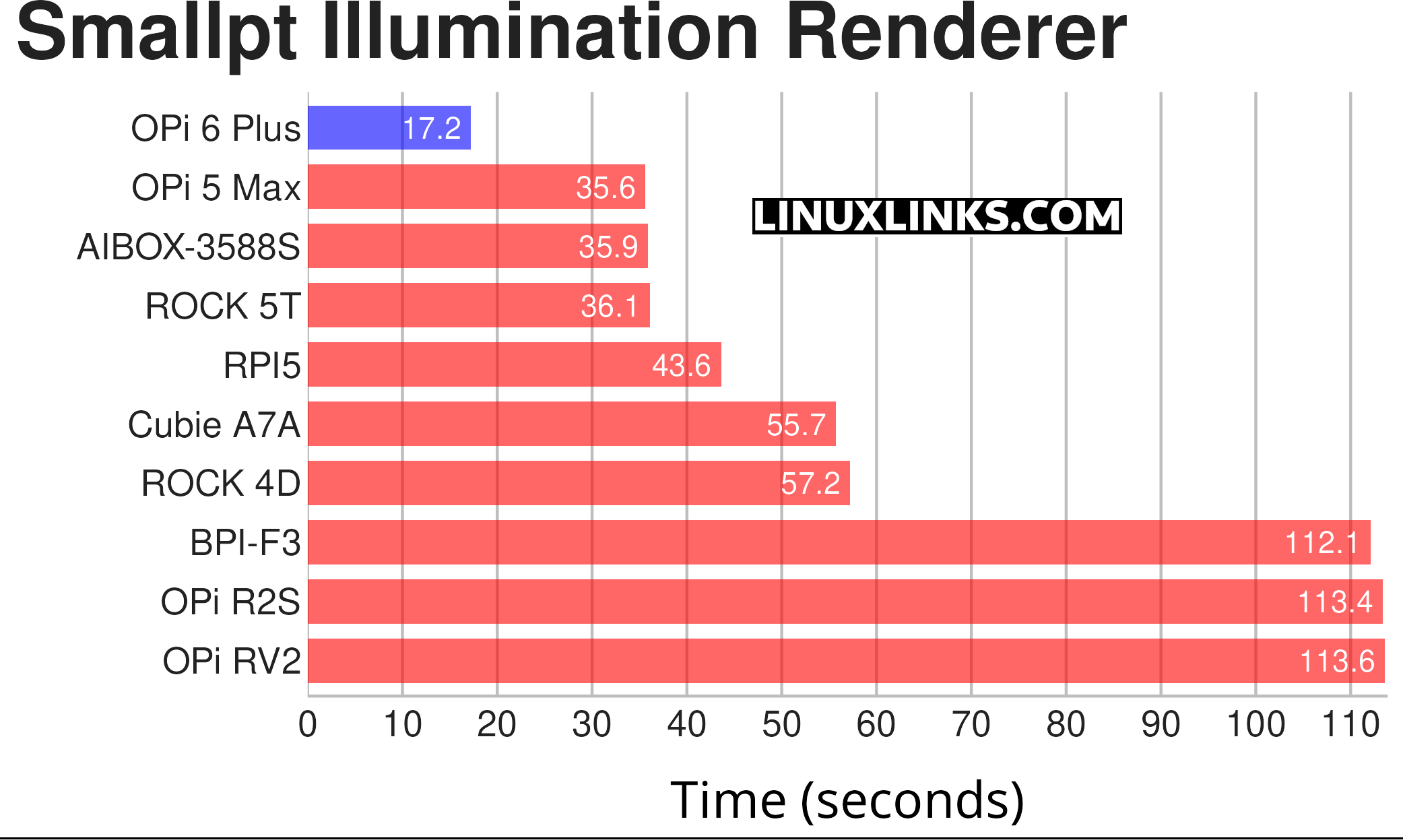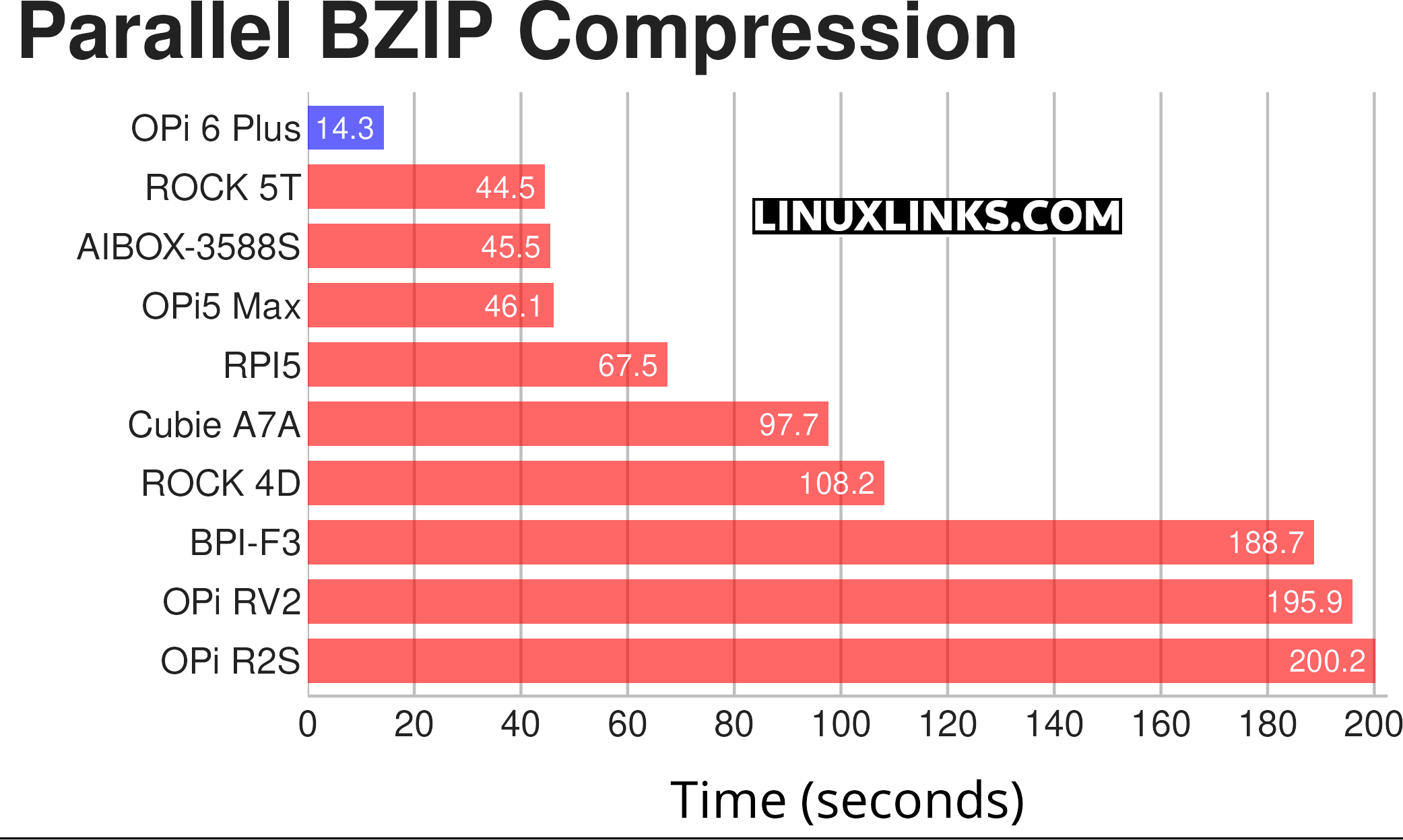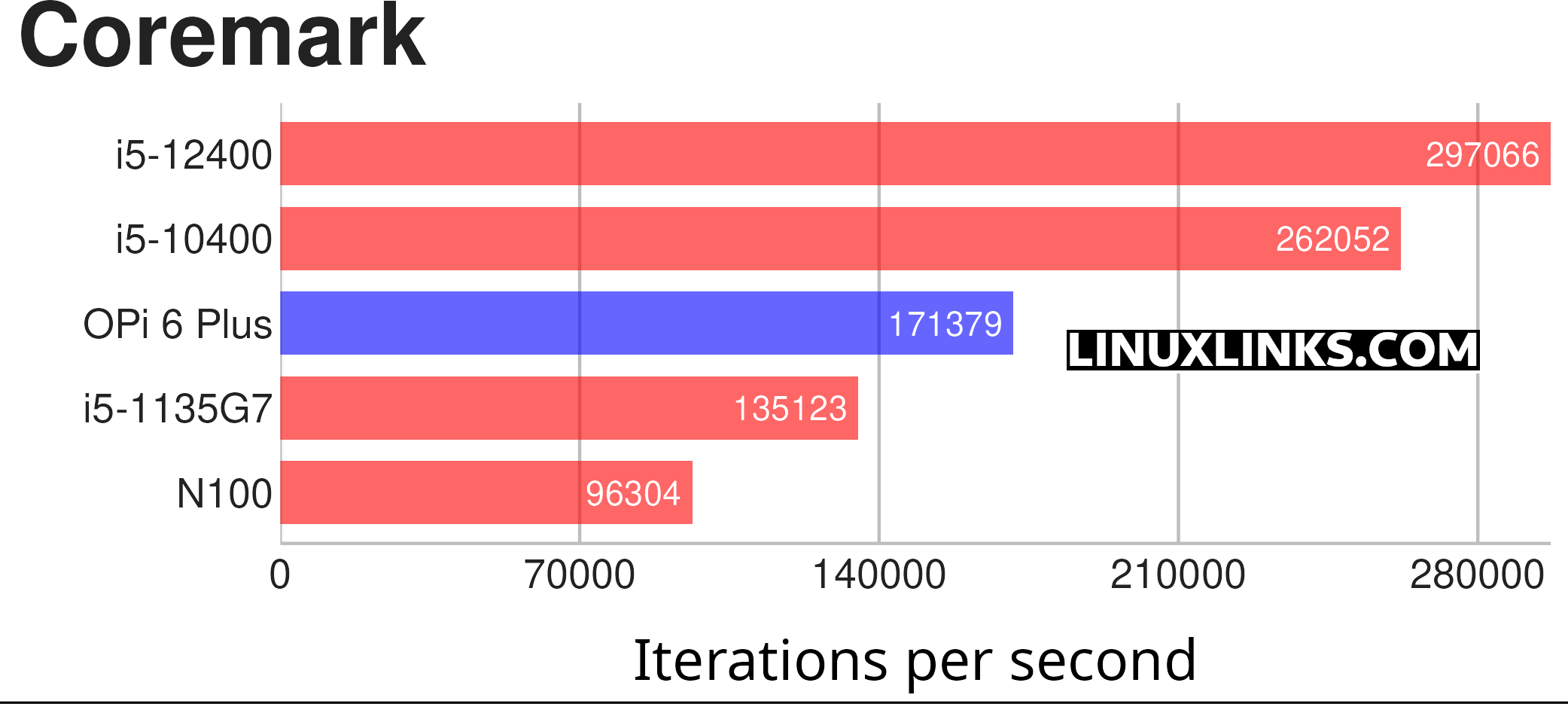This is the second article in a new series looking at the latest piece of kit from the folks at Orange Pi. It’s the Orange Pi 6 Plus development board.
The Orange Pi 6 Plus is a powerful single board computer (SBC). It has a 12 core 64 bit ARMv9 processor with a total computing power of 45 TOPS (CPU/GPU/NPU). The board is available with either 16GB, 32GB, or 64GB of LPDDR5 RAM and offers a bountiful array of interfaces. My board has 32GB of RAM.

For this article in the series I have run a variety of benchmarks on the Orange Pi 6 Plus and compared its results to other single board computers (both ARM and RISC-V). The tests are run using the Phoronix Test Suite unless stated otherwise.
I’ll mainly focus on processor benchmarks for this article, but there are a few other tests included.
The charts include the following SBCs:
OPi 6 Plus – Orange Pi 6 Plus (ARM)
Cubie A7A – Radxa Cubie A7A (ARM)
ROCK 5T – Radxa ROCK 5T (ARM)
ROCK 4D – Radxa ROCK 4D (ARM)
RPI5 – Raspberry Pi 5 (ARM)
OPi RV2 – Orange Pi RV2 (RISC-V)
OPi5 Max – Orange Pi 5 Max (ARM)
OPi R2S – Orange Pi R2S (RISC-V)
BPI-F3 – Banana Pi BPi-F3 (RISC-V )
AIBOX-3588S – Firefly AIBOX-3588S (ARM)
Given the results below, you’ll see why I’ve also compared the performance of the Orange Pi 6 Plus to x86_64 machines.
N100 – Intel N100 mini PC processor
i5-10400 – Intel 10th generation desktop processor
i5-12400 – Intel 12th generation desktop processor
i5-1135G7 – Intel 11th generation laptop processor
Let’s kick off with processor benchmarks.

$ phoronix-test-suite benchmark smallpt
Smallpt is a C++ global illumination renderer written in less than 100 lines of code. Global illumination is done via unbiased Monte Carlo path tracing and there is multi-threading support via the OpenMP library.
With this benchmark, a shorter time indicates better performance. As the chart shows, the Orange Pi 6 Plus completes the test twick as quick as the fastest of the other single-board computers featured.
This result, in itself, prompted me to compare the board against some Intel-based x86_64 processors. Here are the results.

As the chart illustrates the Orange Pi 6 Plus isn’t that far away from the 10th generation Intel desktop processor. That bodes well for using the single board computer as a high performance desktop machine. The Orange Pi 6 Plus trounces the N100.

$ phoronix-test-suite benchmark compress-pbzip2
This test measures the time needed to compress a file (a .tar package of the Linux kernel source code) using BZIP2 compression.
Again a shorter time indicates better performance.
The Orange Pi 6 Plus completes this test so much faster than any of the other single-board computers tested. Again its 12 cores puts it at a big advantage.

The Pi 6 Plus comes extremely close to the i5-10400 machine in this benchmark.

$ phoronix-test-suite benchmark coremark
Coremark is a benchmark that measures the performance of central processing units (CPU) used in embedded systems.
Another great result for the Orange Pi 6 Plus with almost twice the number of iterations per second than the Orange Pi 5 Max, and about four times the amount that the RISC-V boards score.

Let’s move on to RAM and graphics performance.
Next page: Page 2 – Memory and Graphics
Pages in this article:
Page 1 – Introduction / Processor
Page 2 – Memory and Graphics
Complete list of articles in this series:
| Orange Pi 6 Plus | |
|---|---|
| Introduction | Introduction to the series and interrogation of the single-board computer |
| Benchmarks | Benchmarking the Orange Pi 6 Plus |
